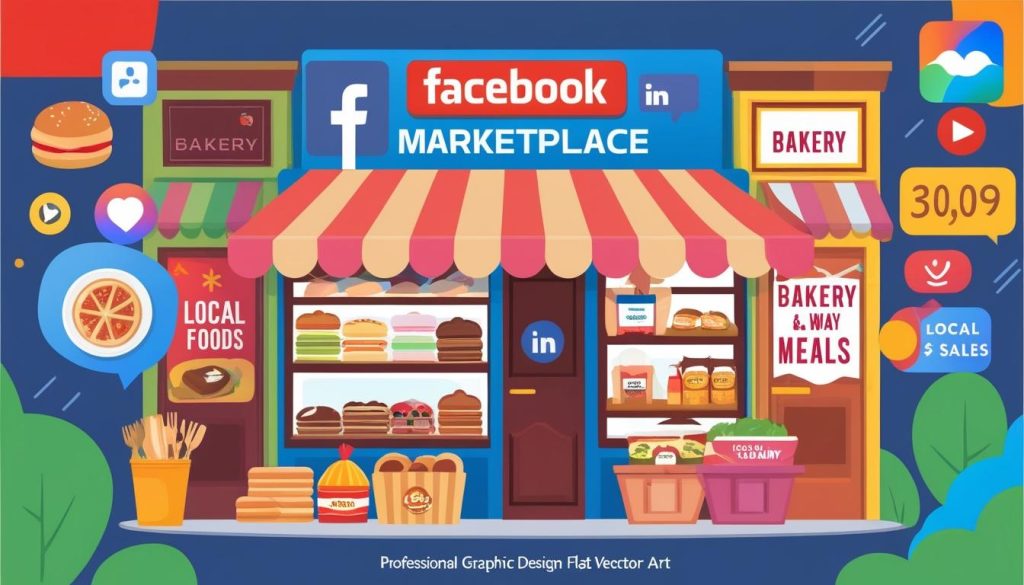A new report reveals that nearly one million Scots are purchasing food through social media, with Facebook Marketplace leading the way.
Food Standards Scotland (FSS) has unveiled a comprehensive report that delves into the increasingly prevalent trend of food sales via social media platforms. This research highlights that approximately 21% of Scotland’s population, which equates to nearly one million individuals, have engaged in purchasing food through social media channels. Notably, Facebook Marketplace has emerged as the leading platform for these transactions.
Since its introduction in 2016, Facebook Marketplace has enabled users to create and sell food items directly. The pandemic, which began in 2020, significantly accelerated this trend, resulting in a marked increase in the food-press sector. The report reveals that the primary motivation behind making purchases through social media is the intention to support local food businesses, with 48% of participants indicating this as their reason. Convenience also plays a crucial role, with 42% of respondents highlighting it as a contributing factor.
This research specifically examined ready-to-eat food sold on Facebook Marketplace, aiming to better understand the scale and safety of such transactions. Key findings indicate that bakery and confectionery items dominate the market, accounting for nearly two-thirds of ready-to-eat foods sold. Additionally, composite products—encompassing items like afternoon teas or buffets—represent about 20% of listings. These composite offerings often rely on direct communication between buyers and sellers to customise the orders.
Take-away meals, which can be either collected or delivered hot, are another significant category, making up around 12% of the total food sold. While high-risk food items, such as sushi and cured meats, constitute a mere 1.2% of total listings, their presence does raise important safety considerations regarding food production and handling.
A notable concern identified in the report is the lack of product information in many advertisements; specifically, many do not include ingredient lists or allergen information. This deficiency underscores the necessity for effective communication between buyers and sellers, enabling consumers to make informed choices about the food they purchase.
Dr Karen Pearson, Senior Scientific Advisor at Food Standards Scotland, discussed the findings, stating, “Social media platforms are transforming how people buy food, and this research has provided a baseline to help us to understand the variety and scale of this method of selling in Scotland. This convenience, however, might come with risks, and it is essential that both buyers and sellers understand the nature of these types of foods so they can make informed choices. Sellers may not have the knowledge to produce safe food, particularly if they are producing higher risk foods.”
In response to the findings of this research, Food Standards Scotland plans to develop tailored guidance aimed at small-scale sellers operating on social media. This initiative seeks to ensure that these individuals are aware of necessary regulations, including the registration requirements for operating as a Food Business Operator and the obligations involved in producing food for sale.
The full report, detailing the research findings and the accompanying response from Food Standards Scotland, is available on their official website.
Source: Noah Wire Services
- https://www.foodstandards.gov.scot/news-and-alerts/fss-publishes-report-which-shows-picture-of-food-sales-over-social-media-in-scotland – Corroborates the FSS report on food sales via social media platforms in Scotland.
- https://www.foodstandards.gov.scot/news-and-alerts/fss-publishes-report-which-shows-picture-of-food-sales-over-social-media-in-scotland – Supports the finding that approximately 21% of Scotland’s population has engaged in purchasing food through social media channels.
- https://techjury.net/blog/facebook-marketplace-statistics/ – Provides context on Facebook Marketplace’s introduction in 2016 and its growth, especially during the pandemic.
- https://techjury.net/blog/facebook-marketplace-statistics/ – Highlights the primary motivations behind making purchases through social media, including supporting local businesses and convenience.
- https://www.foodstandards.gov.scot/news-and-alerts/fss-publishes-report-which-shows-picture-of-food-sales-over-social-media-in-scotland – Details the types of ready-to-eat food sold on Facebook Marketplace, such as bakery and confectionery items, composite products, and take-away meals.
- https://www.foodstandards.gov.scot/news-and-alerts/fss-publishes-report-which-shows-picture-of-food-sales-over-social-media-in-scotland – Addresses the concern about the lack of product information in many advertisements, including ingredient lists and allergen information.
- https://www.foodstandards.gov.scot/news-and-alerts/fss-publishes-report-which-shows-picture-of-food-sales-over-social-media-in-scotland – Quotes Dr. Karen Pearson, Senior Scientific Advisor at Food Standards Scotland, on the findings and implications of the research.
- https://www.foodstandards.gov.scot/news-and-alerts/fss-publishes-report-which-shows-picture-of-food-sales-over-social-media-in-scotland – Describes Food Standards Scotland’s plan to develop tailored guidance for small-scale sellers operating on social media.
- https://www.food.gov.uk/sites/default/files/media/document/FS%20AnnualReport2022-accessible_for_web.pdf – Provides broader context on food standards and safety issues, which are relevant to the concerns raised about food sold on social media.
- https://techjury.net/blog/facebook-marketplace-statistics/ – Supports the popularity and usage trends of Facebook Marketplace, including its user base and transaction volumes.
- https://createandgrow.com/facebook-marketplace-statistics/ – Adds additional statistics on Facebook Marketplace usage, particularly in the UK, which aligns with the report’s findings on food sales.


